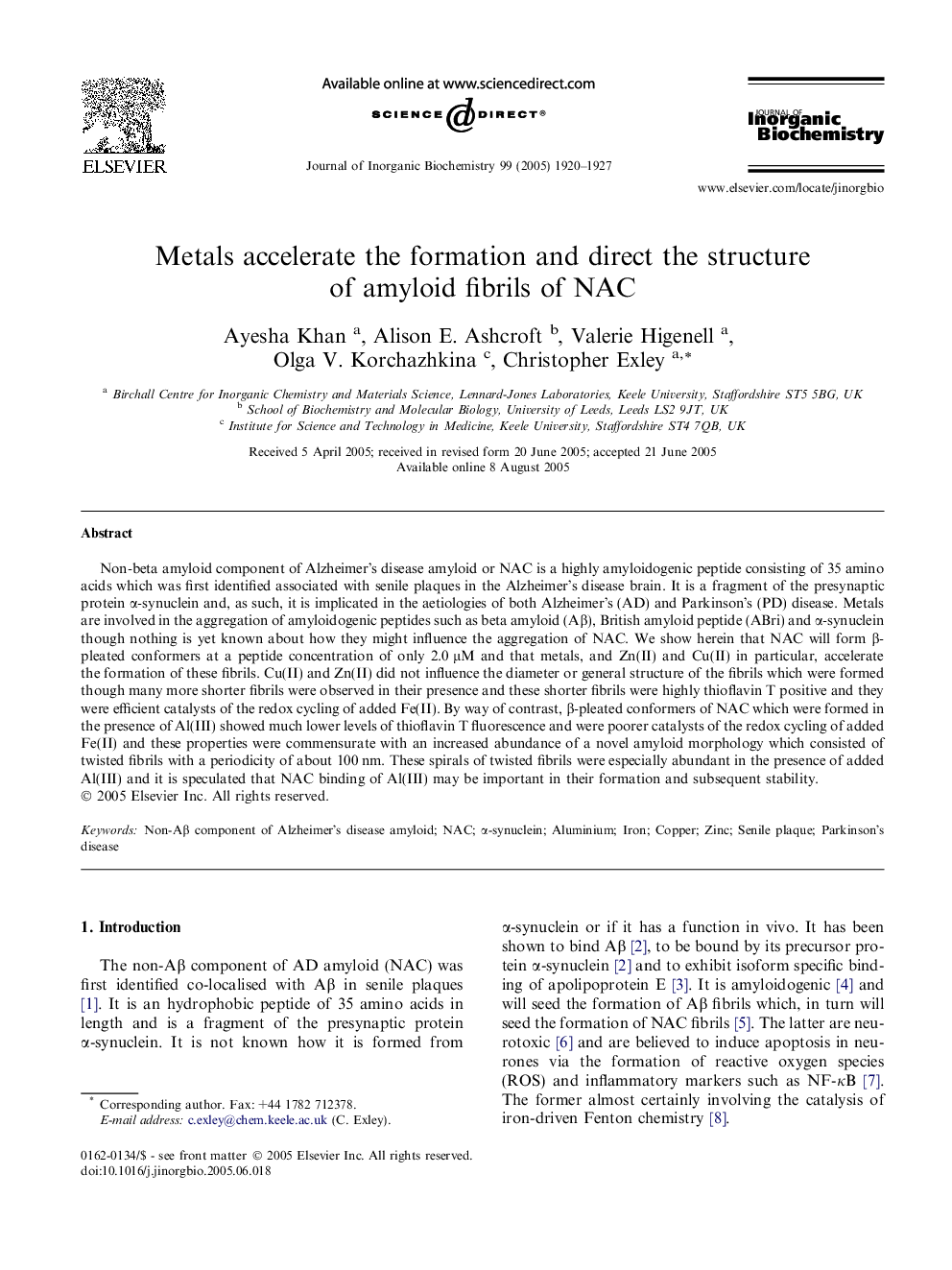| Article ID | Journal | Published Year | Pages | File Type |
|---|---|---|---|---|
| 10574493 | Journal of Inorganic Biochemistry | 2005 | 8 Pages |
Abstract
Non-beta amyloid component of Alzheimer's disease amyloid or NAC is a highly amyloidogenic peptide consisting of 35 amino acids which was first identified associated with senile plaques in the Alzheimer's disease brain. It is a fragment of the presynaptic protein α-synuclein and, as such, it is implicated in the aetiologies of both Alzheimer's (AD) and Parkinson's (PD) disease. Metals are involved in the aggregation of amyloidogenic peptides such as beta amyloid (Aβ), British amyloid peptide (ABri) and α-synuclein though nothing is yet known about how they might influence the aggregation of NAC. We show herein that NAC will form β-pleated conformers at a peptide concentration of only 2.0 μM and that metals, and Zn(II) and Cu(II) in particular, accelerate the formation of these fibrils. Cu(II) and Zn(II) did not influence the diameter or general structure of the fibrils which were formed though many more shorter fibrils were observed in their presence and these shorter fibrils were highly thioflavin T positive and they were efficient catalysts of the redox cycling of added Fe(II). By way of contrast, β-pleated conformers of NAC which were formed in the presence of Al(III) showed much lower levels of thioflavin T fluorescence and were poorer catalysts of the redox cycling of added Fe(II) and these properties were commensurate with an increased abundance of a novel amyloid morphology which consisted of twisted fibrils with a periodicity of about 100 nm. These spirals of twisted fibrils were especially abundant in the presence of added Al(III) and it is speculated that NAC binding of Al(III) may be important in their formation and subsequent stability.
Related Topics
Physical Sciences and Engineering
Chemistry
Inorganic Chemistry
Authors
Ayesha Khan, Alison E. Ashcroft, Valerie Higenell, Olga V. Korchazhkina, Christopher Exley,
